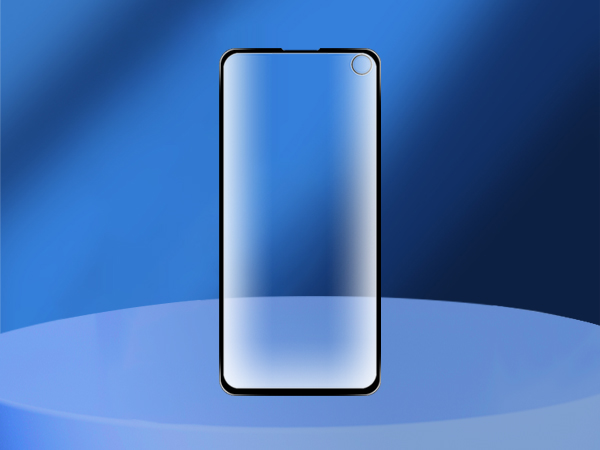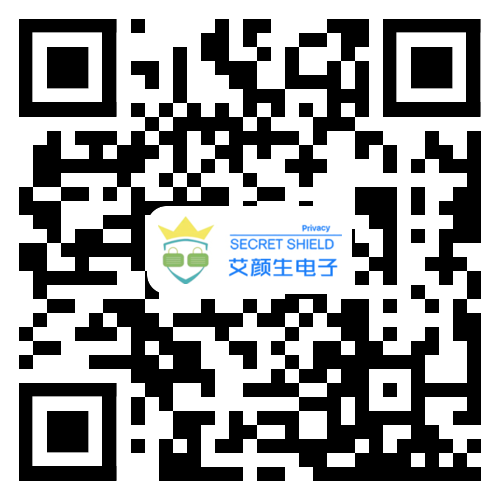The emergence of smart phones has sparked a new industry: Mobile phone film. The reporter found that there are really many types of mobile phone films on the market, not only plastic films, tempered glass films, but also smart films, anti-blue light films... The most amazing thing is the privacy film. It is said that after the privacy film is attached, only the owner of the mobile phone can see the screen clearly, while others see it as a "black screen". Can privacy really be protected with a privacy film attached? The reporter conducted an actual test.

Measure 1: Put on the privacy film, the phone becomes dark
Many people in public places have had a similar experience. When they are swiping their mobile phones, Weibo and WeChat, they inadvertently look up, and sometimes there will be a "voyeur" who stretches his neck and stares at the screen of his mobile phone. . For many "head-downers", in small spaces such as subways and elevators, the content on the mobile phone screen is easy to "disappear". Therefore, many people choose to stick a privacy film on their mobile phones to prevent their mobile phones from being peeked by others.
So what is the difference between the privacy film and the ordinary mobile phone film? Does posting it really prevent others from peeking at your phone? Yesterday, the reporter came to the Zhongguancun Science and Trade Electronic City, and after turning around a number of booths, finally found this privacy film. From the appearance, the "privacy film" is a tempered film, but unlike ordinary tempered films, the privacy film is not transparent, but black, and the price is much higher than that of ordinary mobile phone films. Prices range from to 0.
When the reporter attached this privacy film to the mobile phone, the brightness of the screen suddenly dimmed a lot. Compared with the mobile phone with ordinary tempered film, the difference in brightness is very obvious. As a last resort, the reporter had to increase the screen brightness, but this accelerated the speed of power consumption. In less than two hours, the power dropped from more than 60% to 30%.
Measured 2: Part of the privacy film prevents left and right but not up and down
According to the introduction of the privacy protection film manual, after the privacy protection film is attached, the visible area facing the screen is only 60°, and anyone looking from both sides can only see the dark screen.
The reporter kept the mobile phone with the anti-peep film perpendicular to the line of sight and found that although the screen was dimmed, the content of the screen could still be seen. When the reporter turned the phone to the left and right, at an angle of about 40° to the line of sight, the screen became pitch black, and it actually reflected the tall buildings on the roadside like a mirror.
However, when the reporter turned the mobile phone up and down, they found that the content displayed on the mobile phone screen could still be seen from any angle. It turns out that there are two types of privacy protection films: two-sided privacy protection and four-sided privacy protection. Only the four-sided privacy protection film can achieve all-round privacy protection.
Experts reveal the secret: prevent peeping by blocking light from a certain angle
According to Dr. Zhang Peng, an application development engineer at the China R&D Center of 3M Company, who first introduced privacy films, the privacy films produced by major manufacturers are not made of tempered glass. There are two main materials for privacy films on the market, one is PET, which is mainly used on touch screens of mobile phones and tablet computers, and the other is PC, which is generally used on computer screens. The anti-peeping effect is achieved by blocking light from a certain angle, so users who use the anti-peeping film for the first time will feel that the screen is darkened. The stall owner of Kemao Electronics City told reporters that since the privacy film itself has a thickness of about 0.25 mm, the touch screen sometimes becomes insensitive after it is pasted. And some netizens said that after using the privacy film, the eyes are more prone to fatigue. So will the dimmed screen brightness affect vision? The optometrist from Mermu Eye Hospital said after reviewing the relevant literature that there is currently no corresponding industry standard for privacy films. The screen is bright, which will have a bad impact on the eyes. After the privacy film is attached, it will protect the eyes to a certain extent.
Link: "9H" tempered film is just a gimmick
On the tempered privacy film purchased by the reporter, the word "9H" is marked. According to the stall owner, this shows that the surface of this mobile phone film has reached a hardness of 9H. The reporter inquired about the Mohs hardness scale and found that materials with a hardness of 9 include ruby sapphire, tungsten steel, etc. Obviously, the mobile phone film cannot reach such hardness.
It is understood that the hardness of tempered glass film is about 6, and ordinary keys and knife scratches will not cause damage to the tempered film. As for "9H", it actually means that the hardest 9H pencil will not leave traces on the surface of the tempered film.
tel:
+86 135-1077-5218tel:
+86 150-1249-8942Mail:
Lily@aiyanseng.comaddress:
2nd Floor, No. 3, Yuanming 1st Street, Sunwu Village, Chashan Town, Dongguan Cityabout
-Introduction -Application -Factory -Certificateproduct
-SKU Privacy Film -Frosted privacy film -Full screen HD privacy film -More.....application
-iPhone -Huawei -Samsung -Morenews
-Company news -Industry information -common problem


mobile website
the public
Copyright © 2022 Dongguan Aiyansheng Electronic Technology Co., Ltd. all rights reserved 【Backstage】